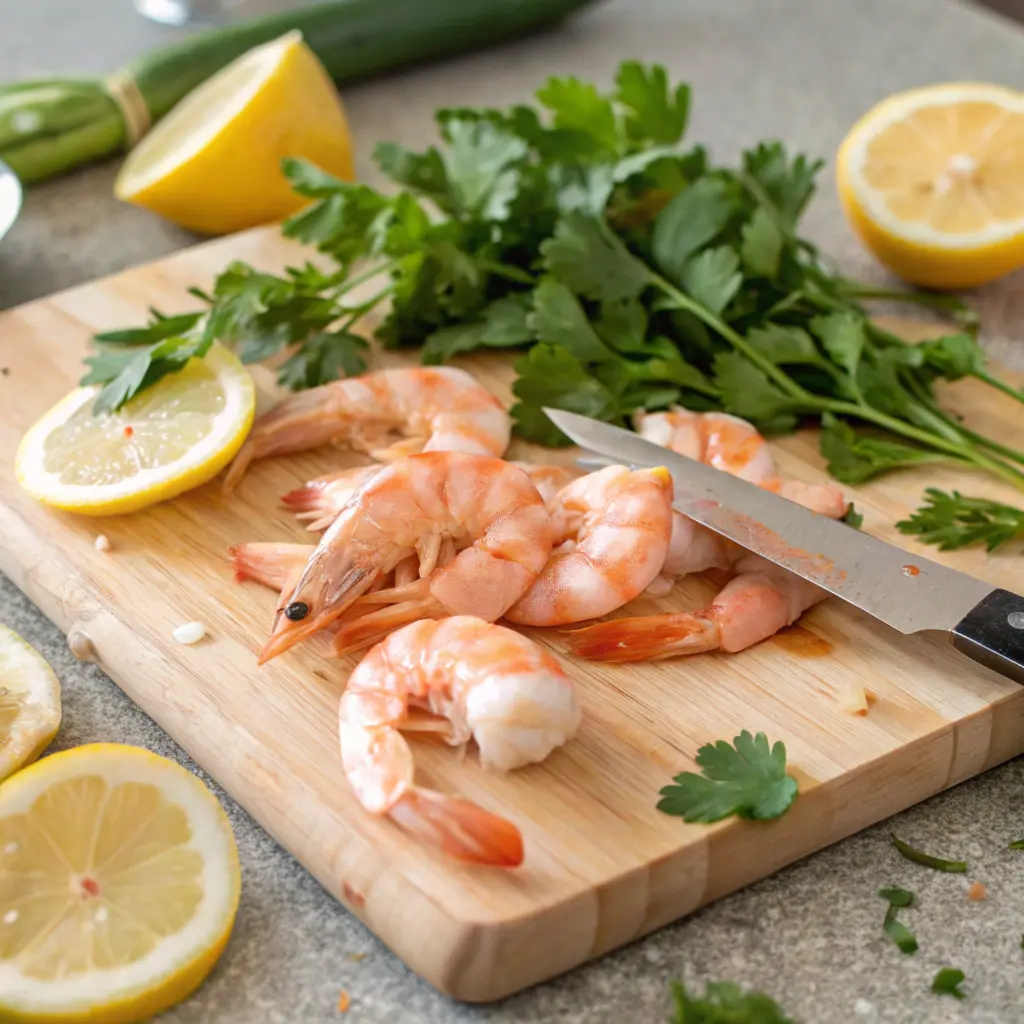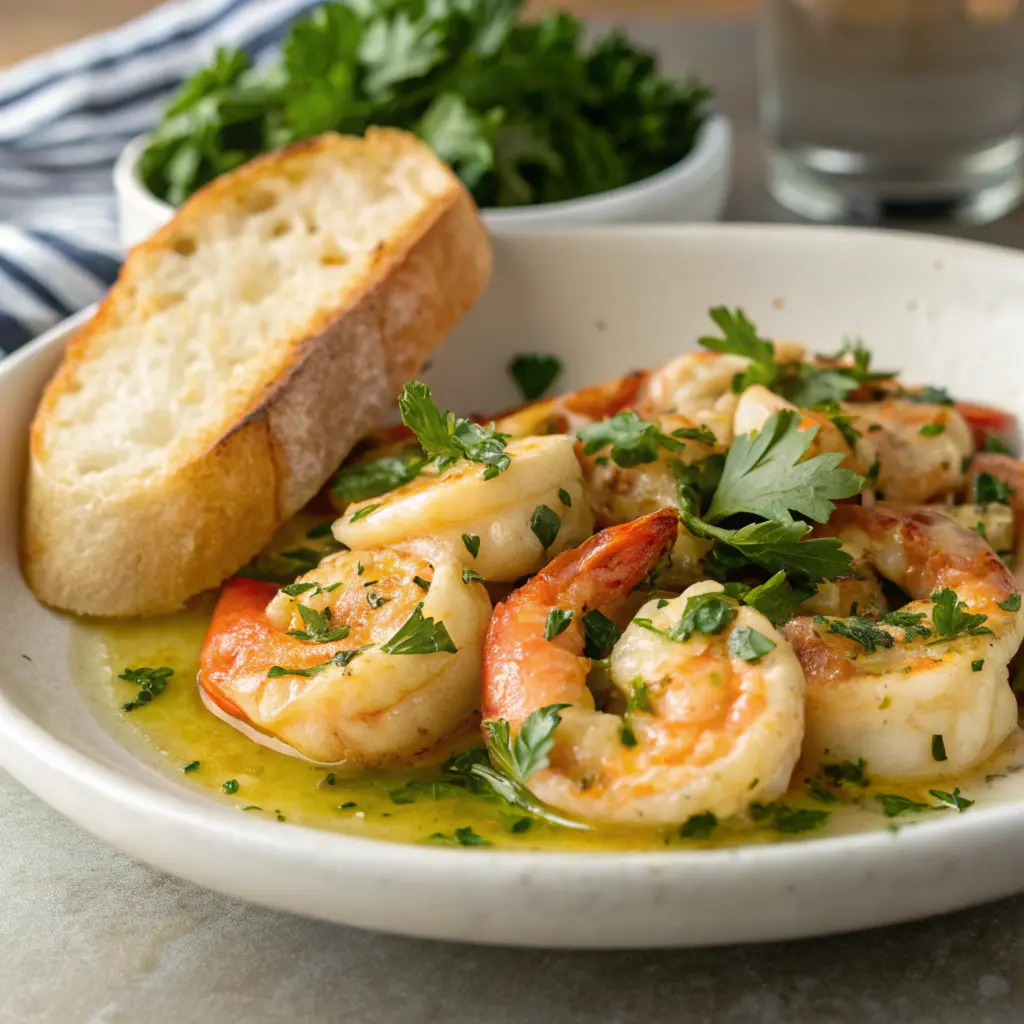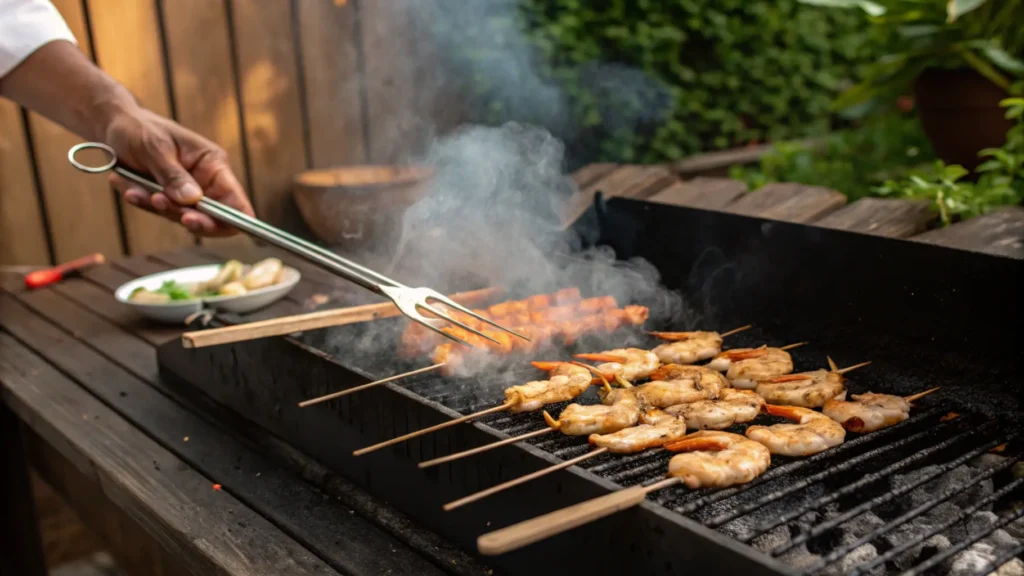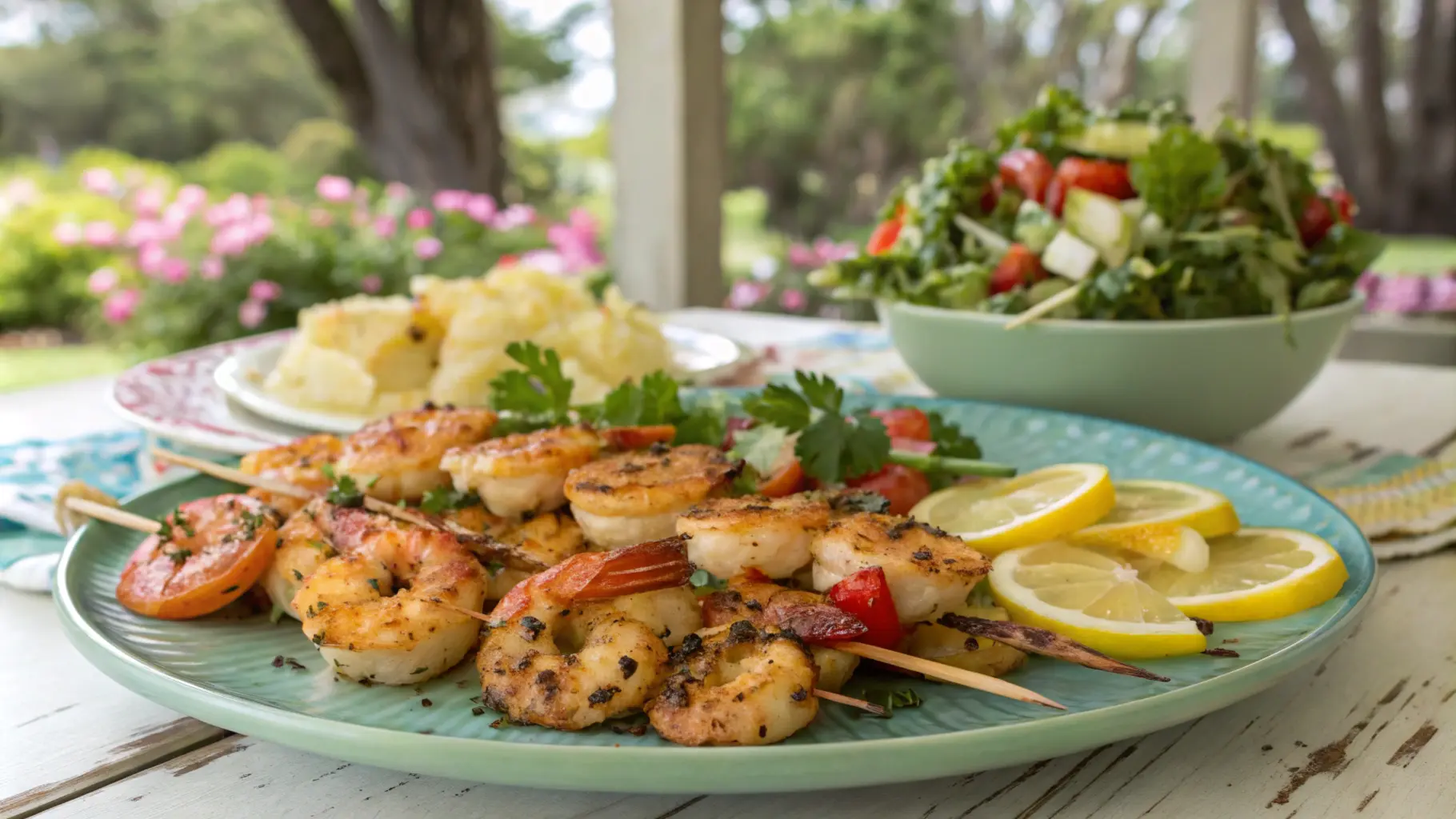Shrimp is a culinary gem, versatile enough to grace everything from casual meals to gourmet spreads. But here’s the million-dollar question: What’s the tastiest way to cook shrimp? This article dives into a range of delicious methods, practical tips, and popular recipes to help you achieve the perfect shrimp dish every time. Whether you’re sautéing, grilling, or baking, you’ll find plenty of ways to savor shrimp at its best. Let’s begin!
Types of Shrimp and Their Culinary Uses
Shrimp comes in a variety of types, each with unique qualities that suit specific dishes. Tiger shrimp, for instance, boast bold flavors that shine in grilled recipes, while sweet and tender pink shrimp are perfect for salads or light sautés. Wild-caught shrimp often have a richer taste than farmed varieties.
When choosing shrimp for cooking, size also matters. Jumbo shrimp work wonderfully in skewers or as a standalone entrée, while smaller varieties are great for soups and fried rice. Knowing your shrimp ensures that you’re starting with the right ingredient for a mouthwatering meal.
Nutritional Benefits of Shrimp
Shrimp is not only tasty but also packs a punch of nutrients. Rich in protein and low in calories, shrimp is a great option for anyone looking to eat healthily without compromising on flavor. They’re also an excellent source of omega-3 fatty acids, which support heart health. Plus, shrimp contain antioxidants like astaxanthin, which may help reduce inflammation.
To learn more about the health benefits of shrimp, you can refer to this informative guide.
How to Select Fresh Shrimp
Choosing fresh shrimp is the first step to creating a truly delicious dish. The fresher the shrimp, the better the texture and flavor. But how can you tell if shrimp are fresh? Look for firm, translucent flesh and a mild, ocean-like smell. Any signs of sliminess or a strong, fishy odor mean it’s time to pass.
When buying whole shrimp, check that the shells are intact and shiny. The eyes should appear clear and not sunken. If you’re buying frozen shrimp, make sure the packaging is free of frost or ice crystals, as these could indicate freezer burn.
Opt for shrimp labeled as wild-caught or sustainably farmed whenever possible. This ensures both quality and eco-friendliness, making your meal guilt-free and tastier.
Cleaning and Deveining Shrimp

Before cooking, shrimp need proper cleaning to remove impurities. Start by rinsing them under cold water to wash away any debris. Next, remove the shells if your recipe calls for peeled shrimp. You can leave the tails on for presentation or remove them entirely for ease of eating.
Deveining might sound tedious, but it’s easier than you think. Use a small knife to make a shallow slit along the back of the shrimp and lift out the black vein using the tip of the blade or a toothpick. While the vein isn’t harmful, removing it improves both appearance and taste.
Once cleaned, pat the shrimp dry with paper towels. This step is especially crucial if you’re planning to sauté or grill, as excess water can prevent proper browning.
Sautéing Shrimp: What’s the Tastiest Way to Cook Shrimp Quickly?
Sautéing shrimp is one of the easiest and most flavorful ways to cook shrimp. If you’re searching for what’s the tastiest way to cook shrimp with minimal effort and maximum flavor, this method is a winner. The high heat locks in the shrimp’s natural juices, resulting in tender, juicy bites with a golden sear.
To get started, heat a skillet over medium-high heat with a drizzle of olive oil or butter. Add shrimp in a single layer, ensuring they cook evenly. Aromatic ingredients like garlic, shallots, or thyme can take the dish to the next level. Shrimp only take 2–3 minutes per side to cook, turning pink and opaque when ready. Be cautious not to overcook, as shrimp can quickly become rubbery.
Garlic Butter Sautéed Shrimp: A Simple Yet Irresistible Recipe

Garlic butter sautéed shrimp is the epitome of quick comfort food. Start by melting a generous amount of butter in a hot skillet. Add minced garlic and sauté until aromatic but not browned. Toss in cleaned shrimp and season with salt, pepper, and a pinch of paprika or chili flakes for a touch of heat.
Cook on medium heat, flipping the shrimp once they begin to curl and develop a light crust. Finish with a squeeze of lemon juice for brightness and garnish with fresh parsley for color. This dish pairs beautifully with pasta, rice, or even crusty bread to soak up the flavorful garlic butter.
Garlic butter sautéed shrimp is a quick and flavorful dish that’s perfect for any occasion. For a detailed recipe with step-by-step instructions, check out this garlic butter shrimp recipe.
Grilling Shrimp: What’s the Tastiest Way to Cook Shrimp Outdoors?
Grilling shrimp is perfect for those who love smoky, charred flavors. This method is ideal for larger shrimp, which hold up well on the grill and develop a delicious caramelized exterior. Before grilling, marinate the shrimp to infuse them with bold flavors. Popular marinades include olive oil with garlic, citrus juices, soy sauce, or herbs like rosemary and thyme.
To grill shrimp easily, use skewers to keep them secure and make flipping a breeze. Cook shrimp over medium heat for 2–3 minutes per side. Watch closely, as shrimp cook quickly. The goal is to achieve a light char while keeping the shrimp juicy and tender.
Marinated Grilled Shrimp Skewers: A Flavorful Way to Cook Shrimp

Marinated grilled shrimp skewers are a crowd-pleaser, offering vibrant flavors and a touch of smokiness. Prepare a marinade with olive oil, lemon juice, minced garlic, paprika, and a pinch of cayenne pepper for a hint of spice.
Let the shrimp soak in the marinade for at least 30 minutes to absorb the flavors. Thread the shrimp onto skewers, ensuring they lay flat for even cooking. Grill the skewers over medium heat, turning once, until the shrimp are pink and lightly charred. Serve with a squeeze of lime or a tangy dipping sauce for a simple yet impressive meal.
Boiling Shrimp: What’s the Tastiest Way to Cook Shrimp?
Boiling shrimp is a simple yet effective method for bringing out their natural sweetness, especially in dishes like shrimp cocktails or hearty Southern-style shrimp boils. If you’re wondering what’s the tastiest way to cook shrimp for a crowd, this classic approach is hard to beat. The secret lies in the seasoning. Infuse the water with aromatics like garlic, bay leaves, peppercorns, and plenty of salt to enhance the shrimp’s flavor.
Once the water reaches a vigorous boil, add the shrimp. Cook them for 2–4 minutes, depending on their size. Larger shrimp may require an extra minute, but they’re done as soon as they turn pink and opaque. To keep them perfectly tender, drain the shrimp immediately and plunge them into an ice bath to halt the cooking process.
Classic Shrimp Boil Recipe: The Tastiest Way to Prepare Shrimp for a Feast
A shrimp boil is a flavor-packed dish that’s perfect for gatherings. Start by boiling seasoned water with ingredients like Old Bay seasoning, garlic, and fresh lemon. Add hearty accompaniments like potatoes, corn on the cob, and smoked sausage.
Once the potatoes are tender, toss in the shrimp. Cook until the shrimp are just pink and tender, about 2–4 minutes. Drain the mixture and serve it family-style on a large tray or parchment paper. Generously sprinkle with Old Bay or Cajun seasoning for that iconic shrimp boil flavor. Pair it with tangy cocktail sauce or garlic butter for dipping, and you’ve got a dish that’s sure to please.
Baking Shrimp: A Hands-Off Way to Cook Shrimp Deliciously
Baking shrimp is a hassle-free method that lets the oven do all the work. It’s an ideal answer for what’s the tastiest way to cook shrimp on busy nights. This technique allows you to layer flavors effortlessly while ensuring even cooking.
Preheat your oven to 400°F and arrange the shrimp in a single layer on a baking dish. Season with olive oil, garlic, lemon zest, and your favorite herbs. Fresh parsley or thyme work beautifully. Bake for 8–10 minutes, flipping the shrimp halfway through to cook evenly. The result? Tender, flavorful shrimp ready to enjoy with minimal effort.
Baked Shrimp Scampi: A Crowd-Pleasing Way to Cook Shrimp
Baked shrimp scampi is a dish that combines buttery, garlicky goodness with tangy lemon and a crisp breadcrumb topping. To make this indulgent recipe, place cleaned shrimp in a baking dish and drizzle with a mixture of melted butter, garlic, lemon juice, and breadcrumbs.
Bake until the shrimp are opaque and the breadcrumbs turn golden brown. Serve the scampi over pasta, rice, or alongside a fresh salad. It’s a dish that’s as satisfying as it is easy to prepare, making it a top contender for the tastiest way to cook shrimp.
Frying Shrimp
Fried shrimp are crispy, golden delights that are perfect for appetizers or main dishes. Use medium or large shrimp, peeled and deveined, and coat them with seasoned batter or breadcrumbs.
Heat oil to 350°F in a deep fryer or skillet. Carefully place the shrimp into the hot oil, frying them in small batches for 2–3 minutes until they’re golden brown. Let them drain on paper towels to maintain their crunch.
Southern-Style Fried Shrimp
Southern-style fried shrimp delivers a flavorful punch with a crispy coating. Combine flour, cornmeal, paprika, garlic powder, and a pinch of cayenne in a shallow dish. Dip shrimp into buttermilk, then dredge them in the seasoned mixture.
Fry until golden brown and serve with tartar sauce or a zesty remoulade. Pair with coleslaw or fries for a comforting, crowd-pleasing dish.
Seasonings and Marinades for Shrimp
Seasonings and marinades can transform shrimp from simple to sensational. A good marinade enhances the shrimp’s natural sweetness while adding depth of flavor. Whether you prefer bold spices or subtle herbal notes, there’s something for every palate.
For a simple seasoning, combine salt, pepper, paprika, and garlic powder. Rub it directly onto the shrimp before cooking. For Cajun flair, use a mix of cayenne, smoked paprika, oregano, and thyme. Old Bay seasoning is another classic choice that works wonderfully for shrimp boils or fried shrimp.
When it comes to marinades, the possibilities are endless. A citrus-based marinade made with lime or lemon juice, olive oil, garlic, and cilantro is light and refreshing. Soy sauce and ginger marinades, often paired with a hint of honey, bring an Asian-inspired twist to grilled or sautéed shrimp.
To marinate shrimp, combine your ingredients in a bowl or resealable bag, then add the cleaned shrimp. Let it rest in the refrigerator for 30 minutes to an hour. Avoid marinating shrimp for too long, as the acid in the marinade can start to “cook” the flesh.
Pairing Shrimp with Sauces
Sauces are the finishing touch that can elevate shrimp dishes to the next level. From creamy dips to tangy reductions, a good sauce complements the shrimp’s flavor without overpowering it.
For a classic option, try cocktail sauce. This combination of ketchup, horseradish, lemon juice, and a dash of hot sauce is the perfect accompaniment to boiled shrimp. Garlic aioli, made with mayonnaise, minced garlic, and a squeeze of lemon, is creamy and indulgent—a great pairing for fried shrimp.
Shrimp pasta dishes often call for Alfredo or tomato-based sauces. A simple garlic butter sauce, enriched with a splash of lemon juice and fresh parsley, works equally well over baked shrimp scampi or tossed with spaghetti.
For grilled shrimp, try a chimichurri sauce. This Argentinian favorite, made with fresh parsley, garlic, red pepper flakes, olive oil, and vinegar, adds a vibrant kick to smoky, charred shrimp. Alternatively, a yogurt-based tzatziki sauce provides a cool and refreshing contrast.
Shrimp in Salads
Shrimp salads are light, refreshing, and bursting with flavor. The natural sweetness of shrimp pairs beautifully with crisp greens, juicy fruits, and tangy dressings. Grilled or boiled shrimp work best for salads, as they maintain their texture while blending seamlessly with the other ingredients.
For a tropical twist, toss shrimp with mixed greens, mango, avocado, and a lime-cilantro dressing. If you prefer a Mediterranean vibe, combine shrimp with cherry tomatoes, cucumber, red onion, olives, and feta cheese, drizzling with a lemon-olive oil vinaigrette.
Shrimp salads can also double as a meal. Add grains like quinoa or farro to make it hearty, or serve on a bed of arugula for a peppery kick. Don’t forget the crunch—top with toasted almonds or crispy croutons for added texture.
Shrimp in Pasta Dishes
Shrimp pasta dishes are the epitome of comfort food. They’re quick to prepare yet taste like something straight from a restaurant. Whether you prefer creamy sauces or tomato-based ones, shrimp adapts beautifully to any recipe.
For a rich option, try shrimp Alfredo. Toss sautéed shrimp with fettuccine and a luscious sauce made of butter, cream, and Parmesan. If you’re craving something lighter, opt for shrimp scampi, where garlic, lemon, and white wine create a bright, flavorful base.
Shrimp also shines in tomato-based pastas like arrabbiata or marinara. Add red pepper flakes for a touch of heat, or toss with fresh basil for a burst of herbaceous flavor. For a healthier take, serve shrimp over zucchini noodles or spaghetti squash instead of traditional pasta.
Shrimp Tacos and Wraps
Shrimp tacos are a fun, flavorful way to enjoy shrimp. They’re perfect for casual dinners or gatherings, allowing guests to customize their toppings. Grilled or fried shrimp are the most popular choices, but sautéed shrimp seasoned with taco spices works just as well.
Start by warming your tortillas—corn or flour, depending on your preference. Fill them with shrimp and pile on toppings like shredded cabbage, diced tomatoes, avocado, and pickled onions. A drizzle of spicy mayo, chipotle crema, or lime yogurt sauce ties everything together.
Wraps are a versatile alternative to tacos. Use large tortillas or flatbreads, and fill them with shrimp, lettuce, and other ingredients like hummus or tzatziki. Shrimp wraps are ideal for on-the-go meals, offering a portable way to enjoy this seafood favorite.
Frequently Asked Questions
What sauces go well with shrimp?
Shrimp pairs beautifully with a wide range of sauces. For a classic choice, cocktail sauce offers a tangy, spicy kick that complements the sweetness of boiled shrimp. Garlic butter sauce is another favorite, often served with sautéed or baked shrimp.
For grilled shrimp, chimichurri sauce adds a bright, herbaceous note, while creamy aioli works perfectly with fried shrimp. Tzatziki or yogurt-based sauces provide a refreshing balance, especially in wraps or tacos. Don’t shy away from experimenting with spicy sauces like sriracha mayo or Thai chili sauce for a more adventurous flavor profile.
Shrimp pairs wonderfully with a variety of sauces, from tangy cocktail sauce to creamy garlic butter. For a full list of delicious sauce ideas, visit this guide.
How to cook garlic shrimp recipe?
Garlic shrimp is a quick and flavorful dish that’s easy to prepare. Start by melting butter or heating olive oil in a skillet over medium heat. Add minced garlic and cook until fragrant, being careful not to let it burn.
Next, toss in your cleaned shrimp and season with salt, pepper, and a pinch of paprika or red pepper flakes. Cook for about 2–3 minutes per side, or until the shrimp are pink and opaque. Finish with a squeeze of lemon juice and a garnish of fresh parsley. Serve with rice, pasta, or crusty bread to soak up the delicious garlic sauce.
Cooking garlic shrimp is quick and easy, combining simple ingredients for maximum flavor. For a step-by-step guide, check out the detailed recipe here.
What is shrimp with garlic sauce made of?
Shrimp with garlic sauce typically includes a simple yet flavorful combination of ingredients. The base consists of butter or olive oil and minced garlic, cooked together to release their rich aroma. Lemon juice or white wine adds acidity, while chicken stock or broth may be included for a saucy consistency.
Seasonings such as salt, pepper, and red pepper flakes enhance the dish, while parsley or other fresh herbs provide a fresh, green finish. Sometimes, soy sauce, ginger, or honey is added for a more Asian-inspired twist.
Why do you soak shrimp in milk before frying?
Soaking shrimp in milk before frying is a trick to tenderize the shrimp and remove any fishy odors. The milk’s natural enzymes break down proteins slightly, resulting in a softer texture. Additionally, milk can neutralize any lingering brininess, making the shrimp’s natural sweetness stand out more.
To soak shrimp, simply submerge them in milk for about 20–30 minutes before proceeding with your recipe. Afterward, pat the shrimp dry and continue with the battering or frying process for perfectly crispy results.
Soaking shrimp in milk before frying helps to tenderize the shrimp and remove any fishy odors. You can learn more about this technique and why it works in detail here.
Discovering Your Favorite Way to Cook Shrimp
Cooking shrimp offers endless possibilities, whether you prefer simple sautéed dishes, smoky grilled skewers, or crispy fried bites. By learning how to choose fresh shrimp, clean and prepare them properly, and experiment with seasonings, marinades, and sauces, you’ll master the art of creating meals that satisfy every craving.
Shrimp’s versatility allows it to shine in salads, pasta dishes, and tacos, so it’s no wonder it’s a go-to ingredient for quick weeknight dinners or special occasions. Moreover, with these tips and recipes at your disposal, you’re well-equipped to experiment with new flavors and techniques. Ultimately, you’re sure to uncover what’s the tastiest way to cook shrimp for your family or guests.
So, grab your skillet, fire up the grill, or preheat the oven—it’s time to whip up a shrimp dish that’ll have everyone asking for seconds!

